#mourad-bey
Photo
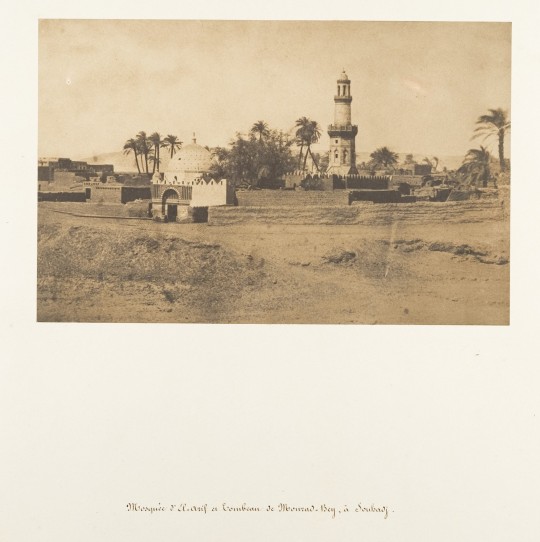
Mosquée d'El-Arif et Tombeau de Mourad-Bey, à Souhadj. 1849–50. Credit line: Gilman Collection, Gift of The Howard Gilman Foundation, 2005 https://www.metmuseum.org/art/collection/search/287095
#aesthetic#art#abstract art#art museum#art history#The Metropolitan Museum of Art#museum#museum photography#museum aesthetic#dark academia
2 notes
·
View notes
Text
Le livre des solutions (2023)
Le livre des solutions (2023)
#MichelGondry #PierreNiney #BlancheGardin #FrankieWallach #CamilleRutherford #FrancoiseLebrun
Mehr auf:
The Book of SolutionsJahr: 2023 (September)
Genre: Comedy / Drama
Regie: Michel Gondry
Hauptrollen: Pierre Niney, Blanche Gardin, Frankie Wallach, Camille Rutherford, Françoise Lebrun, Vincent Elbaz, Mourad Boudaoud, Alex Martin, Lucas Noël, Sting, Dominique Valadié …
Filmbeschreibung: Marc (Pierre Niney) flieht mit seinem gesamten Team in ein kleines Dorf in den Cevennen, um seinen Film bei…

View On WordPress
0 notes
Text
DHL kooperiert mit Schneider Electric bei Transportlösung für mehr Nachhaltigkeit und Agilität

DHL Global Forwarding hat sich mit Schneider Electric, dem Marktführer in der digitalen Transformation von Energiemanagement und Automatisierung, zusammengetan, um eine neue multimodale Transportlösung für mehr Nachhaltigkeit und Effizienz zu pilotieren. Zum Einsatz kommt hierbei Sustainable Aviation Fuel (SAF), sodass die Transportwege nicht nur agiler, sondern gleichzeitig auch die Umweltauswirkungen der Lieferketten reduziert werden.
Gemeinsam mit Schneider Electric hat DHL Global Forwarding zwei innovative multimodale Transportverbindungen zwischen Singapur und Nordamerika sowie zwischen Indien und Nordamerika etabliert, um die Scope-3-Emissionen in der Luftfracht zu reduzieren. Insgesamt plant Schneider Electric, mit seinen Logistikpartnern acht globale multimodale Verbindungen zu entwerfen und umzusetzen, die bei Bedarf eingesetzt werden können.
Schneider Electric schätzt, dass diese neuen Verbindungen durch die Kombination von Luft- und Seefracht die Treibhausgasemissionen dieser regionalen Transportwege um bis zu 40 % im Vergleich zur normalen Luftfracht reduzieren werden. Seit dem Start des Pilotprojekts im März 2023 haben sowohl die Verbindung von Singapur nach Nordamerika als auch die Verbindung von Indien nach Nordamerika, die in Zusammenarbeit mit DHL Global Forwarding betrieben werden, eine Reduzierung der Treibhausgasemissionen um bis zu 20 % erreicht.
Für viele Unternehmen ist die Luftfracht ein wichtiger Bestandteil ihrer globalen Lieferketten, obwohl sie mehr Treibhausgasemissionen verursacht als die Seefracht. SAF kann zwar den Ausstoß von Treibhausgasemissionen verringern, ist aber wesentlich teurer als herkömmlicher Flugzeugtreibstoff. Der Einsatz von Seefracht, die in der Regel günstiger ist, führt zu Einsparungen, die für den Kauf von SAF aufgewendet werden können, wodurch eine weitere Verringerung der Emissionen entsteht.
Multimodale Transportlösungen sind in der Logistik weit verbreitet, um die Resilienz und Agilität von Lieferketten zu erhöhen. Bisher wurden sie jedoch nicht in erster Linie zur Reduzierung der Scope-3-Emissionen eines Unternehmens eingesetzt.
Die neuen Pilotprojekte von Schneider Electric und DHL Global Forwarding haben es den beiden Partnern ermöglicht, den multimodalen Transport als Business-as-usual-Prozess je nach Bedarf zu testen. Die Aufträge werden flexibel ausgeliefert, entweder per Luftfracht oder per multimodalem Transport, je nach Kapazität, Luftfrachtspitzen, Margen, Kundenangeboten und Lagerverfügbarkeit. Aufbauend auf dieser End-to-End-Fähigkeit wird das Modell weiter verbessert, indem DHL Global Forwarding den Einsatz von SAF über seinen GoGreen Plus-Service anbietet, was bei Transporten bis zu 90 % weniger Treibhausgasemissionen bedeuten kann. Dies gibt Schneider Electric die Möglichkeit, im Modell flexibel zu planen, zu entscheiden, zu beschaffen, auszuführen und zu steuern und so eine widerstandsfähigere und flexiblere Lieferkette zu erzeugen.
"Durch unseren GoGreen Plus Service bieten wir unseren Kunden nachhaltige Transportlösungen, einschließlich des Einsatzes von SAF. Unsere Partnerschaft mit Schneider Electric trägt entscheidend dazu bei, positive Veränderungen voranzutreiben und nachhaltige Logistik Realität werden zu lassen. Wir bei DHL haben uns zum Ziel gesetzt, unsere Treibhausgasemissionen bis 2030 auf 29 Millionen Tonnen CO2e zu reduzieren. Um dieses Ziel zu erreichen, investieren wir 7 Milliarden Euro in einen umweltfreundlichen Betrieb und zeigen damit unser unermüdliches Engagement für eine grünere Zukunft", erklärt Thomas George, Chief Commercial Officer, DHL Global Forwarding.
"Bei Schneider Electric steht Nachhaltigkeit im Mittelpunkt unseres Handelns und treibt uns an, Innovationen für die Zukunft zu entwickeln", sagt Mourad Tamoud, EVP Global Supply Chain bei Schneider Electric. "Wir können dies nicht allein tun: Partnerschaften mit unserem Lieferketten-Ökosystem und strategischen Partnern wie DHL sind unerlässlich. Wir hoffen, dass sich andere von diesen Möglichkeiten inspirieren lassen, damit wir gemeinsam die Treibhausgasemissionen reduzieren können.
Gemäß seiner Net-Zero-Roadmap, die von der Science Based Targets-Initiative validiert wurde, hat sich Schneider Electric verpflichtet, bis 2030 in seiner gesamten Wertschöpfungskette eine absolute Kohlenstoffreduktion von 25 % zu erreichen.
Lesen Sie den ganzen Artikel
0 notes
Photo
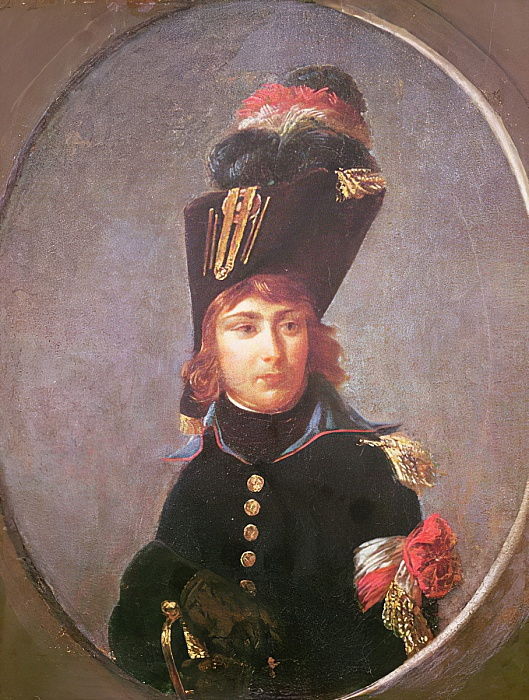
(Painting - Antoine Gros: Eugène Beauharnais, aged 15)
And yet another Egyptian tale from Eugène de Beauharnais’ memoir fragments. This time, it’s a real harem story. It takes place shortly after the French had won the »Battle of the Pyramids« and occupied Cairo. Mourad-Bey, one of the two Mameluk leaders, had fled the city, but his harem, apparently consisting of several dozends of women, had remained behind, like most families of the Mameluks. As Eugène puts it:
»Quelques jours après notre arrivée au Caire, je fus envoyé chez la femme de Mourad-Bey, que ce chef de mamelukes y avait laissée avec tout son sérail. Voici à quelle occasion. Des officiers français, et entre autres le chef d’escadron Rapp, avaient reçu des coups de poignard dans les rues du Caire; les assaillants avaient échappé à nos pursuites, en sorte qu’on pouvait craindre qu’il n’y eût des mamelukes cachés dans cette ville. Dans cette supposition, la maison de Mourad-Bey devait paraître plus suspecte que toute autre. En conséquence, je me rendis chez sa femme, par ordre du général en chef, pour l’assurer que sa maison et ses biens seraient respectés, et qu’elle pourrait compter sur la protection des français, pourvu qu’elle s’abstint de toute communication avec l’ennemi et qu’elle promit de ne donner aucun asile aux malintentionnés. Madame Mourad-Bey me reçut avec la plus grande distinction et me servit elle-même le café. On a imprimé quelque part qu’elle me fit cadeau d’un diamant d’une grande valeur, mais c’est une erreur. Elle protesta de son exactitude à remplir les conditions qu’on exigeait d’elle, et, pour me convaincre que sa maison ne recélait aucune personne suspecte, elle voulut absolument que je la parcourusse avec elle. Nous traversâmes, au rez-de-chaussée, de vastes pièces où se trouvaient empilés une grande quantité de coussins et de carreaux de toute espèce, et je dois avouer franchement que je n’étais pas sans une sorte d’inquiétude, craignant de voir sortir à l’improviste de dessous ces coussins quelqu’un de ces mameluks habiles dans l’art de couper les têtes.
Le premier étage était occupé par les femmes composant le harem de Mourad-Bey; elles y étaient distribuées comme par chambrée. C’est là qu’une scène grotesque et fort embarrassante m’attendait. A l’aspect d’un être aussi nouveau que je l’étais pour la plupart de ces femmes, elles manifestent la curiosité la plus importune; elles m’entourent, me pressent, veulent toucher et défaire mes vêtements, et poussent leurs attouchements jusqu’au dernier degré d’indécence. En vain Madame Mourad-Bey leur ordonne de se rétirer; en vain je les repousse moi-même assez rudement; il fallut appeler les eunuques, qui, accourant à la voix de leur maîtresse, frappent à coups redoublés de nerf de boeuf sur ces forcenées et les obligent enfin à lâcher prise.«
***
A couple of days after our arrival in Cairo, I was sent to the wife of Murad-Bey, left here by this chief of the Mamluks with all his seraglio. This is why I was sent. French officers, and among others the squadron leader Rapp, had been stabbed in the streets of Cairo; the assailants had escaped our pursuits, so that it was to be feared that there were Mamelukes hidden in this city. On this supposition, the house of Murad-Bey must have seemed more suspicious than any other. Consequently, I went to his wife's house, by order of the General-in-Chief, to assure her that her household and property would be respected, and that she could count on the protection of the French, provided that she abstained from all communication with the enemy and promised not to give any shelter to the ill-intentioned. Madame Mourad-Bey received me with the greatest distinction and herself served me coffee. It has been printed somewhere that she presented me with a diamond of great value, but this is a mistake. She protested that she had fulfilled the conditions required of her, and to convince me that there were no suspicious persons in her house, she insisted that I should go through it with her. On the ground floor we passed through spacious rooms, where there were piles of cushions and tiles of all kinds, and I have to confess frankly that I was not without a sort of anxiety, fearing that from beneath these cushions one of those Mamelukes skilled in the art of cutting off heads might suddenly emerge.
The first floor was occupied by the women who made up the harem of Murad-Bey; they were distributed there as if by room. It was there that a grotesque and highly embarrassing scene awaited me. At the appearance of a being as new as I was to most of these women, they manifested the most importunate curiosity; they surrounded me, pressed me, wanted to touch and undo my clothes, and pushed their touching to the last degree of indecency. In vain Madame Mourad-Bey ordered them to withdraw; in vain I myself repulsed them rather roughly; the eunuchs had to be called, who, running to the voice of their mistress, struck these madwomen with repeated blows of pizzles and finally forced them to let go.
(DuCasse, Mémoires et Correspondance politique et militaire du Prince Eugène, tome 1)
On first reading this, I was utterly convinced Eugène had made that part up. Just to spice up his memoirs – after all, what’s a story about Egypt without at least a little harem story, right? But since then I have learned that Napoleon himself, writing about the Egyptian campaign on Saint Helena, mentioned that he had sent Eugène to Mourad-Bey’s wife, adding:
He sent to her Capitaine Beauharnais [sic; in truth Eugène was seventeen at the time and only a sub-lieutenant], his stepson, to convey his greetings and to give her a firman [document] guaranteeing her the possession of all her villages. She was very rich [...] and the harem over which she ruled consisted of fifty women from all countries and of all colours. The officers of the palace had a lot of trouble keeping them back; all the slaves wanted to see the young and handsome Frenchman.
I assume he was still grinning inwardly at the memory of his 17-year-old stepson, somewhat disconcerted and dishevelled, reporting back to headquarters that day…
And I love the idea of Eugène nervously checking every room for hidden assassins, only to be assaulted in a very different way.
48 notes
·
View notes
Text
It's funny Corsica is barely known internationally when it had such an impact world-wide
The few years it was independant it had a constitution which inspired the American Founding Fathers and later would inspired Napoléon for his own Code still used in France to this day (and among other things it was the very first nation where women could vote albeit only if they were living alone or the only adult head of the family but that was big for the time and that disappeared when we became French ; fun fact Pascal Paoli also planned to have Vatican enrage by allowing gay people to marry civilly to put religious authority away from the Corsican nation out of spite, not out of goodbut that never had the time to happen)
Napoléon Bonaparte was Corsican btw, born in Ajaccio and his father working with Pascal Paoli during independance before his birth
Napoléon III being his nephew had Corsican origins obviously
The Pope had Corsican guards which was an order that preceded the current Corps of Gendarmerie of Vatican City
The FBI, back then known as the BOI (Bureau of Investigation), was founded by a Corsican origin man, great grand nephew of Napoléon at that, Charles J. Bonaparte
General Pascal Paoli, leader of Corsica back when it was independant, was (until his ashes were moved back to his native village recently) the only non-British man to rest in Westminster Abbey in London
In fact there are some towns called Paoli in USA
A Corsican man, pharmacist Angelo Mariani, created cola wine or Mariani wine which he used for medical reasons and which John Pemberton resold in USA under the name coca wine later renamed Coca Cola when he replaced wine with sparkly water and lemon juice when Prohibition came
The first commercialized industrialized spray perfumes were created before WWI by François Coty, a Corsican man
A theory wants Christopher Colombus to have been born in Calvi, Corsica
Francisco Morazan was of Corsican origins and the founder of the Federal Republic of Central America
The first airship trip across the Mediterranean Sea was made by a Corsican man, Louis Capazza
The real name of Mourad Bey, who ruled over Tunisia from 1613 to 1631, was Jacques Senti who was captured as a slave by Tunisian pirates at age 9 and climbed the social ladder (also yes, Tumblr, Corsicans are white but were often captured by Moorish pirates who were black, Maghreb or Mauritanian people to be sold as slaves in North Africa and the Ottoman Empire for centuries since we were in a strategical point of the Mediterranean, things that are not like American history exist because humans are awful in general. And that's why our flag is a beheadead Moor pirate head, it was used as a threat to pirates and why our villages are in the mountains instead of close to the sea ; I wonder if that's maybe partially why Napoléon hated black people and put slavery back under his reign, sincr these kinds of kidnappings happened even in early 19th century)
The French Connection involved a lot of Corsican mafiosi
A HUGE Corsican immigration wave hit Porto Rico in 19th century especially in the East of the Island, to the point it influenced their culture without most of them knowing where those elements come from
Tino Rossi, very known for his French Christmas song Petit Papa Noël (Little Father Christmas) was Corsican from Ajaccio often singing about his island
Matisse created fauvism after a stay in Ajaccio in Corsica whose colors contrasted a lot with the grey polluted air of Britanny and Paris he knew and forever changed his perspective of colors
Mussolini craved the Island but without the inhabitants, to quote him "the cage without the birds"
We were the first French region to free ourselves in 1943
Don Juan did exist, and among those who are suspected to have inspired the legend is Don Juan de Mannara, who was a Corsican noble from the Balagne microregion and like all Balagne nobles had for authority the King of Spain which was what remained from the days Corsica used to belong to Aragon (and technically still does !) hence the Don title and the name
Most beach scenes in the Longest Day (when you don't see the cliffs) were shot in Corsica on the beach of Saleccia since it was warmer for the crew
Before building the Eiffel Tower, Gustave Eiffel made several bridges that are still used nowadays in Corsica. It was there he met his wife he was very in love with. As she suffered from asthma and too many stairs would be deadly for her, it was out of love he had the Eiffel Tower be modern for its time by having elevators
And despite all of this it's not very known across the world. It's crazy
6 notes
·
View notes
Text
Thrown into a dungeon.
Finally, towards the end of March, the islands of Hyères are in sight, France, finally, so desired. Saved? No. On the outskirts of Toulon crosses the British frigate Dorothy which, better armed than the travelers, arrests them on the spot on the principle that their passes are not valid [..] Lord Keith being the only one authorized to deliver them [..]
George Elphinstone, commander of the Dorothy, therefore convoys them to Livorno where Keith holds his quarters. As soon as they land, they are taken to Lazaret, the ancient fortress of the old Medici port, and thrown into the dungeon. The admiral, moreover, to mock the equality which is dear to the French revolutionaries, allocates the general the same indemnity as the soldiers, twenty sous a day. Immediately, the latter wrote to him: "I dealt with the Mamelukes, the Turks, the Arabs of the great desert, with the Ethiopians, the blacks of Darfur and the Tartars, all respected their given word and they did not insult misfortune." It is not the condition of the detention which hurts him but the affront which is done to him, so he concludes:" I am better with my soldiers than with all the admirals of England. Deliver straw to the wounded and rid me of your presence. "
For a month, Desaix chomped at the bit and his morale would be catastrophic if Miot, by his good humor, did not raise the mood with his jokes: "I made all the pleasures of high school reappear. We were playing lame devil [..] hopscotch, tag. Sometimes we made sieges and we broke our doors and windows. Desaix commanded one corps, General Davout the other. " The conquerors of Upper Egypt playing four corners? It is true that these men are barely in their thirties [..]
Finally, the British government ordered the release of the captives [..] Understanding a little late that the agreement of El Rachich was hurting the English interests relating to the control of the gate to India, King George's cabinet changed of politics and disowned the commodore, thereby invalidating past agreements. At first reluctant then in favor of this "betrayal", the Turks then started double-dealing, which Kléber ended up realizing. The latter therefore refused to evacuate Cairo and put his army back on a war footing. Hostilities therefore resumed, and to the surprise of the Turkish-English coalition, Kleber, in Heliopolis, crushed the Ottoman army, throwing the grand vizier out of Egypt. Cleverer than is generally said, the day after the second Cairo uprising (March 21) he decided to deal with Mourad Bey, the latter coming to understand that it was better to help the French to leave properly than to endure the British or Ottoman yoke.
Gonzague Saint-Bris - Desaix, le sultan de Bonaparte
#napoleonic#gonzague saint bris#history#louis charles antoine desaix#miot#louis nicolas davout#ngl i want to see the desaix vs davout games :^)#also desaix to keith :))#he actually said free me from your presence#but yeah he meant you disgust me now fuck off#jean baptiste kléber#battle of héliopolis
17 notes
·
View notes
Photo

Mosquée d'El-Arif et Tombeau de Mourad-Bey, à Souhadj by Maxime Du Camp, Metropolitan Museum of Art: Photography
Gilman Collection, Gift of The Howard Gilman Foundation, 2005 Metropolitan Museum of Art, New York, NY
Medium: Salted paper print from paper negative
http://www.metmuseum.org/art/collection/search/287095
2 notes
·
View notes
Note
Is there any Ottoman princess who still has descendants today.
Hello, sure! I'm going to list them using the "Genealogy of the Ottoman Empire" published in 2005 as source, as it's the most recent genealogy work I have.
descendants of Mediha Sultan, daughter of Abdülmecid I
Leila Mediha Samy (b. 5.10.1955): great-granddaughter. She has a son called Henry Orhan Samy Beggin (b. 21.9.1991)
Mustafa Reshid Sami (b. 12.11.1952): great-grandson. He has a daughter called Zoe-Jo Sami (b. 23.4.1994)
Ekrem Abdurrahman Sami (b. 2.9.1954): great-grandson. He has two children: Rebecca Anne Sami (b. 7.12.1982) and Ömer Ryan Sami (b. 2.4.1993)
Catherine Melek Samy (b. 28.1.1960): great-granddaughter. She has two children: India Holy Samy-Lewis (b. 29.12.1998) and Anouchka Sky Evyleen Samy-Lewis (b. 16.6.2000)
descendants of Cemile Sultan, daughter of Abdülmecid I
Naile (b. 1912): great-granddaughter. I'm not sure she's still alive but she has two children: Engin (b. 1933) and Sevil (b. 1942)
Behremend (b. 1917): great-granddaughter. Again, I'm not sure she's still alive but she has a daughter: Gülnûr Sertel (b. 1955) who, in turn, has a son, Kenan (b. 1973)
Bilge (b. 1933): great-great-granddaughter. I'm not sure she's still alive.
Fatma Nühbe Çubukçu (b. 1949): great-great-granddaughter.
Fuad Bengü (b. 24.8.1948): great-great-grandson
Dogan Bengü (b. 5.5.1959): great-great-grandson
Arzu Bengü (b. 9.11.1969): great-great-granddaughter
Edhem Dömeke (b. 22.5.1933): great-grandson. He has two daughters: Ayşe Dömeke (b. 1971) and Aylin Dömeke (b. 1976)
descendants of Esma Sultan, daughter of Abdülaziz Han
Alp Saadeddine Mohamed Bey Osmansoy (b. 1930): grandson. He has three children: Orhan Saadeddine Osmansoy (b. 1969), Shirine Mohamed Bey (b. 1970) who in turn has a son, Kamil Mahmoud Faour (b. 1999); Ayline Mohamed Bey (b. 1976)
Kaya Mohamed Bey Osmansoy (b. 1937): grandson.
Aydin Mohamed Bey Osmansoy (b. 1947): grandson
descendants of Hatice Sultan, daughter of Murad V
Kenize Mourad de Kotwara (b. 1940): granddaughter
descendants of Fatma Sultan, daughter of Murad V
Resan Iris (b. 15.11.1956): granddaughter. She has two children: Serra Deveci (b. 19.3.1979) and Emirhan Deveci (b. 23.3.1991)
descendants of Zekiye Sultan, daughter of Abdülhamid II
Fatma Yasemin Yegen (b. 18.9.1973): great-granddaughter
Muhsin Osman Yegen (b. 14.12.1977): great-grandson
descendants of Naime Sultan, daughter of Abdülhamid II
Bülent Ossmann (b. 2.5.1930): grandson. He has a son, Rémy Chengiz Ossmann (b. 16.11.1963) who, in turn, has a son: Sélim Ossmann (b. 14.12.1992)
Koubilay (b. 1937): grandson. He has three children: Shehnaz (b. 1970), Inci (b. 1972) and Orhan (b. 1975)
descendants of Ayşe Sultan, daughter of Abdülhamid II
Ayşe Rebia Nami (b. 3.8.1945): granddaughter.
Mediha Şükriye Nami Osmanoğlu (b. 24.5.1947): granddaughter. She has a daughter: Ayşe Marie-Christine Nami-Conopio (b. 16.7.1969)
Fethiye Nimet Nami Osmanoğlu (b. 21.3.1953): granddaughter.
Ayşe Adile Nami Osmanoğlu (b. 6.8.1958): granddaughter. She has two children: Osman Necati Ferhat Ariba (b. 31.1.1980) and Ayşe Feyzan Ariba (b. 9.9.1983)
Gul Nür Dorothée Nami Osmanoğlu (b. 10.1.1960): granddaughter. She has three children: Hanzade Audrey Nami-Ragot (b. 4.2.1988), Ayzade Maylis Nami-Ragot (b. 16.6.1991) and Aléxis Cem Nami-Ragot (b. 11.3.1993)
Ayten Sofia Nami Osmanoğlu (b. 24.3.1961): granddaughter. She has a daughter: Refia Roksan Kunter (b. 10.8.1984)
descendants of Fatma Ulviye Sultan, daughter of Mehmed VI
Ismail Halim Özba (b. 6.10.1945): grandson. He has two children: Nadia Özba (b. 1969) and Halil Özba (b. 1974)
Hanzade Özba (b. 4.10.1953): granddaughter. She has two chidren: Neslişah Evliyazade (b. 1977) and Mesude Evliyazade (b. 1978)
descendants of Rukiye Sabiha Sultan, daughter of Mehmed VI
Prince Abbas Hilmi of Egypt (b. 16.10.1941): grandson. He has two children: Fatma Sabiha Hilmi (b. 28.9.1974) and Daoud Abd El Moneim Hilmi (b. 23.6.1979)
Princess Ikbal of Egypt (b. 22.12.1944): granddaughter
Princess Sabiha Fazile Ibrahim of Egypt (b. 8.8.1941): granddaughter. She has two sons: Ali-Suad Ürgüplü (b. 28.9.1967) and Mehmed-Selim Ürgüplü (b. 31.10.1968)
Prince Ahmed Rifat Ibrahim of Egypt (b. 31.8.1942): grandson
Prince Osman Rifat Ibrahim (b. 20.5.1951): grandson
#anon#ask post#ask: ottoman history#mediha sultan daughter of abdulmecid i#cemile sultan daughter of abdulmecid i#esma sultan daughter of abdulaziz#hatice sultan daughter of murad v#fatma sultan daughter of murad v#zekiye sultan daughter of abdulhamid ii#naime sultan daughter of abdulhamid ii#ayse sultan daughter of abdulhamid ii#fatma ulviye sultan daughter of mehmed vi#rukiye sabiha sultan daughter of mehmed vi#Anonymous
18 notes
·
View notes
Photo
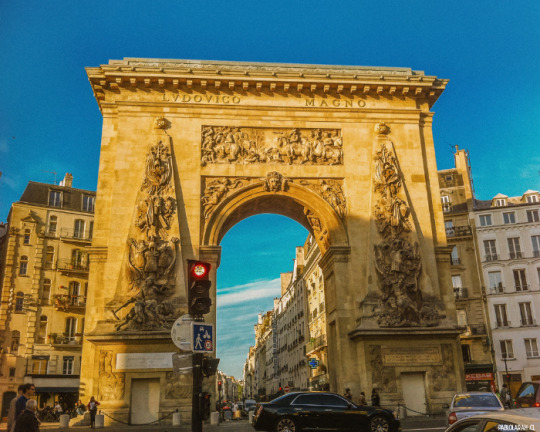
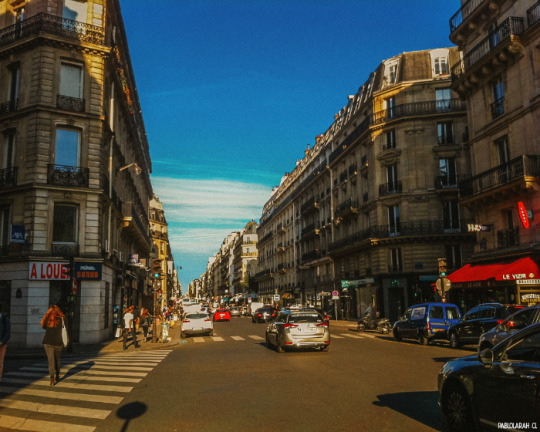


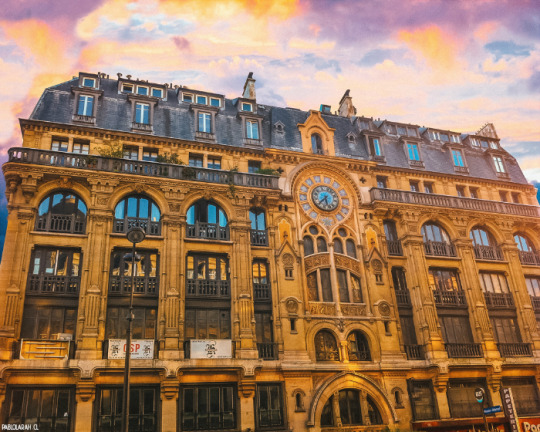
Quarantine Diaries
La rue d’Hauteville est une voie publique située dans le 10e arrondissement de Paris.
Elle débute au 30-34, boulevard de Bonne-Nouvelle, et finit 1, place Franz-Liszt. Elle rencontre entre-temps la rue de l’Échiquier, la rue d’Enghien, la rue Gabriel-Laumain, la rue des Petites-Écuries, la cité Paradis, la rue de Paradis, la rue des Messageries, la rue de Chabrol.
Elle débouche sur la perspective de l’église Saint-Vincent-de-Paul, ce qui est l’occasion d’un gag récurrent du film Zazie dans le métro.
---
The Porte Saint-Denis is a Parisian monument located in the 10th arrondissement, at the site of one of the gates of the Wall of Charles V, one of Paris' former city walls. It is located at the crossing of the Rue Saint-Denis continued by the Rue du Faubourg Saint-Denis, with the Boulevard de Bonne-Nouvelle and the Boulevard Saint-Denis.
The Porte Saint-Denis was the first of four triumphal arches to be built in Paris. The three others are the Arc de Triomphe du Carrousel (1806-1808), Porte Saint-Martin (1674), and Arc de Triomphe (1836).
---
The Porte Saint-Denis is a triumphal arch inspired by the Arch of Titus in Rome. The monument is 24.65 m (80.9 ft) high, 25 m (82 ft) wide, and 5 m (16 ft) deep. The arch itself is 15.35 m (50.4 ft) high in the center and 8 m (26 ft) across.
The main arch is flanked by obelisks applied to the wall face bearing sculptural groups of trophies of arms. Above the main arch, the southern face carries a sculptural group by Michel Anguier of "The Passage of the Rhine" in a sunk panel, while the north face carries allegorical figures of the Rhine and the Netherlands. The entablature bears the gilded bronze inscription LUDOVICO MAGNO, "To Louis the Great". Two smaller pedestrian walkways were built through the obelisk pedestals but they have now been closed.
---
La rue du Caire est une voie publique située dans le 2e arrondissement de Paris. Elle débute au 111, boulevard de Sébastopol et se termine au 2, place du Caire.
Le nom du Caire lui fut donné en mémoire de l'entrée victorieuse des troupes françaises au Caire, le 23 juillet 1798.
Cette rue a été ouverte à la fin de l'année 1799 sur une partie des bâtiments et des jardins du couvent des Filles-Dieu, rue Saint-Denis.
La bataille des Pyramides a lieu le 3 thermidor an VI (21 juillet 1798) entre l'Armée française d'Orient commandée par Bonaparte et les forces mamelouks commandées par Mourad Bey, lors de la campagne d'Égypte.
Dans un souci de propagande, Bonaparte décide d'appeler cette victoire « bataille des Pyramides », nom plus glorieux que « bataille du Caire » ou « bataille d'Embabech » (où se trouvait l'emplacement du camp de Mourad Bey et où eurent lieu effectivement les combats), donnant ainsi à croire qu'elle s'était déroulée au pied même des célèbres monuments. C'est d'ailleurs ainsi que l'imaginaire collectif la représente souvent, notamment dans des tableaux. En réalité, les pyramides devaient tout au plus être vaguement visibles à l'horizon.
---
Rue Réaumur
Elle porte le nom du physicien et naturaliste français René-Antoine Ferchault de Réaumur (1683-1757).
Rue Réaumur No 61-63 : construction Art nouveau de style néo-gothique, construite par les architectes Philippe Jouannin et Édouard Singery à partir de 1898.
Les sculptures créées par les frères Pierre François dit « Francis » et Aimé Jacquier « et compagnie » représentent les mois de l'année, les signes du zodiaque et les saisons.
#architecture #arquitectura #arquitetura #StreetPhotography #StreetPhotographyInColors #IG_StreetPhotography #StreetPhotographyCommunity #StreetPhoto #PeopleInFrame #PhotoDocumentary #StreetPhotographyInternational #StreetPhotographyWorldwide #CandidShots #Paris #France #Europe #ParisMaVille
.
.
.
.
Made with ❤ & @photoshop
3 notes
·
View notes
Link
Olympiateilnehmer Mourad Aliev gibt am 20. November sein Profidebüt bei der großen Universum-Box-Gala, die in Kooperation mit Probellum stattfindet.
0 notes
Text
THE MAMELUKE CHAPTER I THE MYSTIC TIE
Towards the close of the last century, this kiosk was the home of Mourad Bey, chieftain of the Mamelukes, a chosen band of arbitrary warriors, who dazzled the Egyptian people with their parade of magnificence, and struck terror into the hearts of their surrounding enemies by their chivalric daring.
Their ranks were recruited from the slave-marts of Alexandria, and a score of youth were ever in training at the chieftain's kiosk, where most of them soon forgot their native Circassian or Albanian homes. There, want had been their portion until their relatives sold them to the slave-trader. But if they possessed sufficient intelligence and manly beauty to tempt the Mameluke purveyor, they at once became the favored youth of Egypt. French and Italian instructors stored their minds, while veterans taught them how to manage Arabian steeds, to poise the lance, and to wield the scimitar with deadly skill. And, as a stimulus to exertion, of body and of mind, each one knew that when death or old age caused a vacancy in the band of leaders, the best qualified slave was selected to fill it.
Rich armor, fine horses, and all that a follower of the Prophet can desire, were thenceforth his.
Our story commences with the promotion of one of these Mameluke cadets, named Osmanli. He had been purchased when young, much to the surprise of the slave-dealer, who could not imagine that such a young stripling would ever make an athletic warrior. In this opinion his purchaser secretly concurred, but a peculiar mark, tattooed in blue characters upon the boy's arm, touched the Mameluke's heart. Hazarding his reputation as a knowing purchaser, he sent the lad up to Cairo, and soon saw with great satisfaction, that those who jested at his judgment would be deceived. Ere he had attained his sixteenth year, young Osmanli was undoubtedly the first among the cadets. He spoke French and Italian with fluency, had read the Koran, and was a skillful engineer. And, while his naturally fine intellect was enriched far in advance of his comrades, his bodily powers had so matured, that be excelled them in all athletic sports and warlike exercises. Eminently handsome, as though a sculptor had moulded his form, he displayed in every feature a spirit of the manliest daring and valor. Thick, glossy black hair waved gracefully over his noble brow, for the Mamelukes did not shave their heads ...
#13 (p.5)
Source: Poore, Benjamin Perley, 1820-1887. The Mameluke, Or The Sign of the Mystic Tie. B., 1853.
https://catalog.hathitrust.org/Record/102688339/Cite
0 notes
Text
2020 Olympics France Roster
Athletics
Ethan Cormont (Créteil)
Pierre-Ambroise Bosse (Nantes)
Morhad Amdouni (Porto-Vecchio)
Djilali Bedrani (Toulouse)
Wilhem Belocian (Basse-Terre)
Gabriel Bordier (Laval)
Kévin Campion (Vénissieux)
Sidi-Hassan Chahdi (Cluses)
Yohann Diniz (Épernay)
Pascal Martinot-Lagarde (Saint-Maur-Des-Fossés)
Alex Miellet (Dijon)
Nicolas Navarro (Aix-En-Provence)
Benjamin Robert (Toulouse)
Ludvy Vaillant (Fort-De-France)
Jimmy Vicaut (Bondy)
Gabriel Tual (Prayssas)
Azzedine Habz (Paris)
Baptiste Mischler (Haguenau)
Jimmy Gressier (Boulogne-Sur-Mer)
Hugo Hay (Bressuire)
Aurel Manga (Paris)
Wilfried Happio (Bourg-La-Reine)
Louis Gilavert (Corbeil-Essones)
Alex Phelut (Beaumont)
Mouhamadou Fall (Beaumont-Sur-Oise)
Méba-Mickaël Zézé (Saint-Aubin-Lès-Elbeuf)
Ryan Zézé (Saint-Aubin-Lès-Elbeuf)
Gilles Biron (Schœlcher)
Thomas Jordier (Noisy-Le-Sec)
Muhammad Kounta (Paris)
Ludovic Ouceni (Villepinte)
Augustin Bey (Sarrebourg)
Benjamin Compaoré (Bar-Le-Duc)
Jean-Marc Pontvianne (Nîmes)
Melvin Raffin (Bourg-La-Reine)
Renaud Lavillenie (Barbezieux-Saint-Hilaire)
Valentin Lavillenie (Barbezieux-Saint-Hilaire)
Lolassonn Djouhan (Montargis)
Quentin Bigot (Hayange)
Kevin Mayer (Argenteuil)
Susan Jeptoo-Kipsang (Paris)
Carolle Zahi (Paris)
Yanis David (Les Abymes)
Mélina Robert-Michon (Voiron)
Alexandra Tavernier (Annecny)
Gémima Joseph (Cayenne, French Guiana)
Amandine Brossier (Cholet)
Rénelle Lamote (Coulommiers)
Cyréna Samba-Mayela (Champigny-Sur-Marne)
Laura Valette (Saint-Herblain)
Cynthia Leduc (Créteil)
Orlann Ombissa-Dzangue (Sens)
Floria Gueï (Nantes)
Sokhna Lacoste (La Couronne)
Brigitte Ntiamoah (Mulhouse)
Rouguy Diallo (Nice)
Boxing
Samuel Kistohurry (Lormont)
Billal Bennama (Blagnac)
Sofiane Oumiha (Toulouse)
Mourad Aliev (Nice)
Maïva Hamadouche (Albi)
Canoeing
Martin Thomas (Mainxe-Gondeville)
Boris Neveu (Lourdes)
Maxime Beaumont (Boulogne-Sur-Mer)
Étienne Hubert (Sedan)
Guillaume Burger (Schiltigheim)
Adrien Bart (Orléans)
Marjorie Delassus (Vaires-Sur-Marne)
Marie-Zélia Lafont (Orthez)
Léa Jamelot (Obernai)
Vanina Paoletti (Rennes)
Manon Hostens (Roubaix)
Sarah Guyot (Vannes)
Cycling
Benjamin Thomas (Lavaur)
Rémi Cavagna (Clermont-Ferrand)
Benoît Cosnefroy (Cherbourg)
Kenny Elissonde (Longjumeau)
David Gaudu (Landivisiau)
Guillaume Martin (Paris)
Rayan Helal (Saint-Martin-d’Hères)
Sébastien Vigier (Palaiseau)
Florian Grengbo (Bourg-En-Bresse)
Donavan Grondin (Saint-Pierre)
Victor Koretzky (Béziers)
Jordan Sarrou (Saint-Étienne)
Sylvain André (Cavaillon)
Joris Daudet (Saintes)
Romain Mahieu (Saint-Quentin-En-Yvelines)
Anthony Jeanjean (Montpellier)
Mathilde Gros (Lens)
Marion Borras (Pontcharra)
Clara Copponi (Aix-En-Provence)
Coralie Demay (Nogent-Sur-Marne)
Valentine Fortin (Toulouse)
Marie Le Net (Pontivy)
Juliette Labous (Roche-Lez-Beaupré)
Victoire Berteau (Lambres-Les-Douai)
Pauline Ferrand-Prévot (Reims)
Loana Lecomte (Annecy)
Axelle Étienne (Vaujours)
Manon Valentino (Valréas)
Diving
Alex Jandard (Écully)
Matthieu Rosset (Lyon)
Alaïs Kalonji (Paris)
Fencing
Romain Cannone (Paris)
Alexandre Bardenet (Paris)
Yannick Borel (Pointe-A-Pitre)
Enzo Lefort (Châtenay-Malabry)
Julien Mertine (Saint-Germaine-En-Laye)
Maxime Pauty (Paris)
Erwann Le Péchoux (Pertuis)
Boladé Apithy (Dijon)
Ronan Gustin (Fontaine-Lès-Dijon)
Coraline Vitalis (Pointe-A-Pitre)
Anita Blaze (Baie-Mahault)
Pauline Ranvier (Paris)
Ysaora Thibus (Les Abymes)
Astrid Guyart (Suresnes)
Cécilia Berder (Morlaix)
Manon Brunet (Lyon)
Charlotte Lembach (Strasbourg)
Sara Balzer (Strasbourg)
Gymnastics
Sam Aït-Saïd (Champigny-Sur-Marne)
Loris Frasca (Forbach)
Cyril Tommasone (Villeurbanne)
Allan Morante (Drancy)
Marine Boyer (Saint-Benoît)
Mélanie Dos Santos (Sainte-Etienne)
Aline Friess (Obernai)
Carolann Héduit (Angers)
Léa Labrousse (Chamalières)
Judo
Luka Mkheidze (Sucy-En-Brie)
Kilian Le Blouch (Clamart)
Guillaume Chaine (Colombes)
Axel Clerget (Saint-Dizier)
Alexandre Iddir (Villepinte)
Teddy Riner (Paris)
Shirine Boukli (Aramon)
Amandine Buchard (Noisy-Le-Sec)
Sarah-Léonie Cysique (Sarcelles)
Clarisse Agbegnenou (Rennes)
Margaux Pinot (Besançon)
Madeleine Malonga (Soisy-Sous-Montmorency)
Romane Dicko (Paris)
Karate
Steven Da Costa (Mont-Saint-Martin)
Leïla Heurtault (Chartres)
Alexandra Feracci (Ajaccio)
Pentathlon
Valentin Belaud (Le Chesnay)
Valentin Prades (Cannes)
Marie Oteiza (Mont-De-Marsan)
Élodie Clouvel (Saint-Priest-En-Jarez)
Sailing
Thomas Goyard (Nouméa)
Kévin Pepponet (Saint-Jean-De-Luz)
Émile Amoros (Paris)
Lucas Rual (Paris)
Quentin Delapierre (Vannes)
Jean-Baptise Bernaz (Fréjus)
Jérémie Mion (Paris)
Marie Bolou (Lorient)
Aloïse Retornaz (Brest)
Manon Audinet (La Rochelle)
Charline Picon (Royan)
Camille Lecointre (Harfleur)
Albane Dubois (Roubaix)
Lili Sebesi (Marseilles)
Shooting
Clément Bessaguet (Montpellier)
Éric Delaunay (Saint-Lô)
Emmanuel Petit (La Rochelle)
Jean Quiquampoix (Paris)
Carole Cormenier (Les Baliveaux)
Mélanie Couzy (Romorantin-Lanthenay)
Lucie Anastassiou (La Rochelle)
Céline Goberville (Senlis)
Mathilde Lamolle (Aubagne)
Océanne Muller (Schiltigheim)
Climbing
Bassa Mawen (Nouméa)
Mickaël Mawen (Nouméa)
Julia Chanourdie (Chambéry)
Anouck Jaubert (Saint-Étienne)
Surfing
Michel Bourez (Taohotu)
Jérémy Florès (Réunion)
Johanne Defay (Réunion)
Pauline Ado (Anglet)
Swimming
Yohann Ndoye-Brouard (Chambéry)
David Aubry (Saint-Germain-En-Laye)
Florent Manaudou (Villeurbanne)
Marc-Antoine Olivier (Denain)
Jonathan Atsu (Carhaix-Plouguer)
Théo Bussière (Arnas)
Maxime Grousset (Nouméa)
Léon Marchand (Toulouse)
Mehdy Metella (Cayenne, French Guiana)
Jordan Pothain (Échirolles)
Mewen Tomac (Évreux)
Antoine Viquerat (Toulouse)
Clément Mignon (Aix-En-Provence)
Charles Rihoux (Nice)
Hadrien Salvan (Paris)
Enzo Tesic (Amiens)
Lara Grangeon (Nouméa)
Mélanie Henique (Amiens)
Marie Wattel (Lille)
Charlotte Bonnet (Enghien-Les-Bains)
Cyrielle Duhamel (Béthune)
Béryl Gastaldello (Marseille)
Fantine Lesaffre (Roubaix)
Margaux Fabre (Perpignan)
Anouchka Martin (Saint-Dizier)
Lucile Tessariol (Paris)
Assia Touati (Sarraguemines)
Charlotte Tremble (Compiègne)
Laura Tremble (Compiègne)
Wrestling
Koumba Larroque (Arpajon)
Mathilde Rivière (Dreux)
Archery
Thomas Chirault (Moreuil)
Pierre Plihon (Nice)
Jean-Charles Valladont (Besançon)
Lisa Barbelin (Ley)
Badminton
Brice Leverdez (Saint-Maur-Des-Fossés)
Thom Gicquel (Paris)
Xuefei Qi (Rostrenen)
Delphine Delrue (Sarcelles)
Basketball
Frank Ntilikina (Strasbourg)
Timothé Luwawu-Cabbarot (Cannes)
Thomas Huertel (Béziers)
Nicolas Batum (Lisieux)
Guerschon Yabusele (Dreux)
Evan Fournier (Saint-Maurice)
Nando De Colo (Cholet)
Vincent Poirier (Clamart)
Andrew Albicy (Sèvres)
Rudy Gobert-Bourgarel (Saint-Quentin)
Petr Cornelie (Calais)
Moustapha Fall (Paris)
Marine Fauthoux (Pau)
Nwal-Endy Miyem (Reims)
Alexia Chartereau (Le Mans)
Sandrine Gruda (Cannes)
Héléna Ciak (Dunkirk)
Sarah Michel (Ris-Orangis)
Valériane Vukosavljević (Bordeaux)
Iliana Rupert (Sèvres)
Gabby Williams (Sparks, Nevada)
Marine Johannès (Lisieux)
Alixandra Duchet (Roanne)
Diandra Tchatchouang (Villepinte)
Ana Căta-Chițiga (Paris)
Laëtitia Guapo (Clermont-Ferrand)
Marie-Ève Paget (Annecy)
Mamignan Touré (Nevers)
Equestrian
Alexandre Ayache (Lantosque)
Karim Laghouag (Nogent-Le-Rotrou)
Christopher Six (Limours)
Nicolas Touzaint (Angers)
Simon Delestre (Sologne)
Mathieu Billot (Deauville)
Nicolas Delmotte (Douai)
Isabelle Pinto (Paris)
Morgan Barbançon (Paris)
Maxima Collard (Paris)
Pénélope Leprevost (Rouen)
Soccer
Paul Bernardoni (Évry)
Pierre Kalulu-Kayatengwa (Lyon)
Melvin Bard (Écully)
Timothée Pembélé (Beaumont-Sur-Oise)
Niels Nkounkou (Pontoise)
Lucas Tousart (Arras)
Arnaud Nordin (Paris)
Enzo Le Fée (Lorient)
Nathanaël Mbuku (Villeneuve-Saint-Georges)
André-Pierre Gignac (Martigues)
Téji Savanier (Montpellier)
Alex Beka (Paris)
Clément Michelin (Montauban)
Florian Thauvin (Orléans)
Modibo Sagnan (Saint-Denis)
Stefan Bajić (Saint-Étienne)
Anthony Caci (Forbach)
Randal Kolo-Muani (Bondy)
Ismaël Doukouré (Lille)
Isaac Lihadji (Marseille)
Dimitry Bertaud (Montpellier)
Golf
Romain Langasque (Andorra La Vella, Andorra)
Antoine Rozner (Paris)
Céline Boutier (Montrouge)
Perrine Delacour (Orlando, Florida)
Handball
Nedim Remili (Créteil)
Romain Lagarde (Lorient)
Melvyn Richardson (Marseille)
Dika Mem (Paris)
Nicolas Tournat (Niort)
Vincent Gérard (Woippy)
Nikola Karabatić (Strasbourg)
Kentin Mahé (Dormagen, Germany)
Yann Genty (Engheins-Les-Bains)
Timothey N’Guessan (Massy)
Luc Abalo (Ivry-Sur-Seine)
Michaël Guigou (Apt)
Luka Karabatić (Strasbourg)
Ludovic Fabregas (Perpignan)
Hugo Descat (Paris)
Valentin Porte (Versaille)
Méline Nocandy (Saint-Claude)
Blandine Dancette (Firminy)
Pauline Coatanea (Saint-Renan)
Chloé Bouquet-Valentini (Morteau)
Allison Pineau (Chartres)
Coralie Lassource (Maisons-Laffitte)
Grâce Zaadi-Deuna (Courcouronnes)
Amandine Leynaud (Aubenas)
Kalidiatou Niakaté (Aubervilliers)
Cléopatre Darleaux (Mulhouse)
Laura Flippes (Strasbourg)
Béatrice Edwige (Paris)
Pauletta Foppa (Amilly)
Estelle Nze-Minko (Saint-Sébastien-Sur-Loire)
Alexandra Lacrabère (Pau)
Rowing
Guillaume Turlan (Bordeaux)
Thibaud Turlan (Bordeaux)
Matthieu Androdias (La Rochelle)
Hugo Boucheron (Lyon)
Hélène Lefebvre (Paris)
Élodie Ravera-Scaramozzino (Nice)
Claire Bové (Augergenville)
Laura Tarantola (Annemasse)
Violaine Aernoudts (Lille)
Margaux Bailleul (La Havre)
Marie Jacquet (Pontoise)
Emma Lunatti (Saint-Martin-d’Hères)
Rugby
Pauline Biscarat (Tours)
Jade Ulutule (Fécamp)
Fanny Horta (Perpignan)
Caroline Ladagnous (Pau)
Camille Grassineau (Bergerac)
Lina Guérin (Paris)
Jessy Trémoulière (Brioude)
Rose Thomas (Feurs)
Audrey Amiel (Nîmes)
Marjorie Mayans (Tremblay-En-France)
Jennifer Troncy (Bagnols-sur-Cèze)
Elodie Guiglion (Hyères)
Shannon Izar (Lille)
Skateboarding
Vincent Matheron (Marseille)
Aurélien Giraud (Lyon)
Vincent Milou (Tarnos)
Madeleine Larcheron (Paris)
Charlotte Hym (Paris)
Table Tennis
Simon Gauzy (Toulouse)
Emmanuel Lebesson (Niort)
Alexandre Cassin (Basse-Terre)
Prithika Pavade (Saint-Denis)
Yuan Jia (Cholet)
Stéphanie Loeuillette (Le Havre)
Taekwondo
Magda Wiet-Hénin (Nancy)
Althéa Laurin (Paris)
Tennis
Jérémy Chardy (London, U.K.)
Ugo Humbert (Metz)
Gaël Monfils (Geneva, Switzerland)
Gilles Simon (Boulogne-Billancourt)
Pierre-Hugues Herbert (Develier, Switzerland)
Nicolas Mahut (Boulogne-Billancourt)
Alizé Cornet (Nice)
Fionna Ferro (Valbonne)
Caroline García (Lyon)
Kristina Mladenovic (Dubai, U.A.E.)
Triathlon
Léo Bergère (Le Pont-De-Beauvoisin)
Dorian Coninx (Échirolles)
Vincent Luis (Vesoul)
Cassandre Beaugrand (Livry-Gargan)
Léonie Périault (Vélizy-Villacoublay)
Volleyball
Barthélémy Chinenyeze (Dunkirk)
Jenia Grebennikov (Rennes)
Jean Patry (Montpellier)
Ben Toniutti (Mulhouse)
Kévin Tillie (Cagnes-Sur-Mer)
Earvin N’Gapeth (Saint-Raphaël)
Antoine Brizard (Poitiers)
Pierre Boyer (Saint-Denis)
Nicolas Le Goff (Paris)
Daryl Bultor (Basse-Terre)
Trévor Clévenot (Royan)
Yacine Louati (Tourcoing)
Weightlifting
Bernardin Matam (Yaoundé, Cameroon)
Anaïs Michel (Langres)
Dora Tchakounté (Yaoundé, Cameroon)
Gaëlle Nayo-Ketchanke (Clermont-l'Hérault)
#Sports#National Teams#France#Races#Fights#Boxing#Boats#Basketball#Nevada#Animals#Soccer#Golf#Andorra#Florida#Germany#Tennis#U.K.#Switzerland#U.A.E.#Cameroon
1 note
·
View note
Text
Cairo Road ** (1950, Eric Portman, Laurence Harvey, Maria Mauban, Harold Lang, John Gregson) - Classic Movie Review 9879
Cairo Road ** (1950, Eric Portman, Laurence Harvey, Maria Mauban, Harold Lang, John Gregson) – Classic Movie Review 9879
Director David Macdonald’s 1950 thriller Cairo Road stars Laurence Harvey, aged 21, at the start of his film career, although already in his fifth film.
He supports his friend Eric Portman in an exotically located British crime melodrama, in which an Egyptian colonel of police, Colonel Youssef Bey (Portman), and his new young lieutenant assistant, Lieutenant Mourad (Harvey), from the Egyptian…
View On WordPress
0 notes
Text
New on 500px : Gate Of Memories by Nedim1968 by Nedim1968
New on 500px : Gate Of Memories by Nedim1968 by Nedim1968
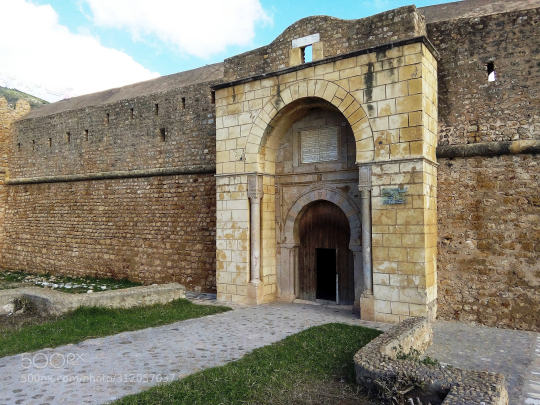
Last photo of this series dedicated to the discovery of Tunisia
Ghar el Melh is a small town halfway between Tunis and Bizerte. It was the first naval base during the Ottoman era. This city goes back to the Punic period but it knew its climax especially during the reign of Osta Mourad and Ahmed Bey with the construction of the arsenal.
Several forts have been built in the city to protect it: Borj…
View On WordPress
#500px#arch#architecture#Bizerte#Borj El Loutani#fortification#garrison#gate#Ghar El Melh#monument#Ottoman era#Prison#stones#structure#Tunisia#walls
0 notes
Photo

Our patient Mr. Mourad had a hairtransplant with fue method and dental treatment with us. He is very happy with his new smile and he is now waiting for his hair growth. Thank you for your confidence in us. ☺️👍 Unser Patient Herr Mourad hatte eine Fue Haartransplantation und Zahnbehandlung bei uns. Er freut sich auf sein neues Lächeln und wartet jetzt bis die Haara wachsen. Vielen Dank für Ihr Vertrauen. #haartransplantationfue #haartransplantationistanbul #hairtransplantation #haartransplantation #hairtransplant #haartransplantatieistanbul #hairtransplantturkey #fue #zahnarzt #zahnklinik #zahnmedizin #dentist #dentalclinic #dentalbleaching #zahnaufhellung #zahnimplantate #zahnkronen #zahnbehandlung #dentaltreagment #dentalimplantate #dentalcrowns #veneers #dentalveneers #hollywoodsmile (Istanbul, Turkey) https://www.instagram.com/p/BtTTMppln4V/?utm_source=ig_tumblr_share&igshid=1rsypzls8vmuv
#haartransplantationfue#haartransplantationistanbul#hairtransplantation#haartransplantation#hairtransplant#haartransplantatieistanbul#hairtransplantturkey#fue#zahnarzt#zahnklinik#zahnmedizin#dentist#dentalclinic#dentalbleaching#zahnaufhellung#zahnimplantate#zahnkronen#zahnbehandlung#dentaltreagment#dentalimplantate#dentalcrowns#veneers#dentalveneers#hollywoodsmile
0 notes
Text
Desaix: a companion for Bonaparte and "A star for Auvergne"
With a statue on Place de Jaude, a sculpture and two paintings on display at the Roger Quilliot Art Museum, General Desaix is a key figure in Clermont-Ferrand. These works of art allow us to better appreciate his history.
Posted on 01/05/2020 at 08:34 • Updated on 12/06/2020 at 10:29
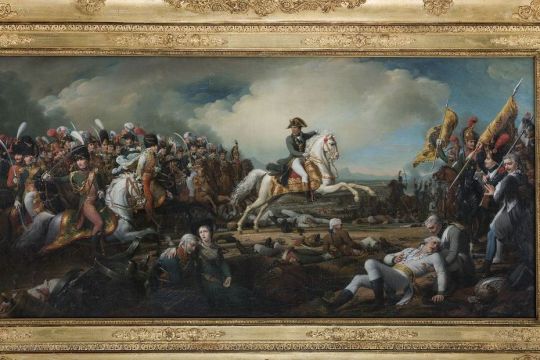
On the Place de Jaude in Clermont-Ferrand, a modest bronze figure of Desaix points to the direction of a fiery Vercingetorix on horseback.
It is a bit Desaix' story in works of art: the story of his death serves to showcase Bonaparte's glory.
The painting "The Battle of Marengo" by Jean Godefroy was purchased in 2016. An investment of ten thousand euros that the museum did not hesitate to pay.
Justine Bouju is scientific officer of the collections at the Roger Quilliot Art Museum; for the museum team, this historical figure is essential: "In Auvergne, Desaix is the local star. Every time we see by chance an element on Desaix, we try to buy it. The opportunity makes the purchase. We do documentary vigils for our purchasing leads, we list hundreds of works, we do not even buy 5% of what we look. The battle of Marengo was expensive but it was within our acquisition budget. "
"He was the man of sacrifice"
The character was embellished by Napoleonic legend and his popularity came from the way he died. He is the hero of the Battle of Marengo and in Godefroy's painting he dies in the foreground facing the majesty of Napoleon Bonaparte perched on his horse. On the left of the painting, he is dying while sitting. Faithful Desaix dies in the shadows to emphasize that he did not fight for his personal glory.
This is how the famous historian Michelet describes him in his History of the Revolution: "Desaix was the man of sacrifice, who, for himself, always wanted duty, and glory never, who gave it to others, and even at the expense of his life; a righteous man, a hero, a saint, the blameless Desaix. "
This young general, born in 1768 at the castle of Ayat, in Ayat-sur-Sioule (Puy-de-Dôme), became an officer at the age of fifteen and a major general at the age of twenty-six. In 1800, at age 32, he took command of two divisions in the Army of Italy. In Marengo in Piedmont, he succeeded in a tour de force: while the French armies were in difficulty against the Austrians, Desaix led the attack on horseback and managed to turn the situation around. He died bravely, with a bullet to the heart, under the orders of Bonaparte to whom he wrote before the Italian campaign: "Order me to join you, general or soldier, I don't care, as long as I fight next to you. A day without serving the country is a day cut off from my life. "
"A giant who towered over thousands of soldiers"
The two other works in the museum also represent him at the time of his death, but in the presence of his horse.
The life-size sculpture by Joseph Chinard which is in the entrance to the museum was commissioned by the city of Clermont-Ferrand in 1800 just after Desaix's death. The winner of Marengo already fallen to the ground is lying flat, his back on the barrel of a cannon. One of his hands still holds the bit of the half-prancing horse, the other rests inert, engaged in the handle of the saber.

The large-format painting produced by Jean-Baptiste Regnault in 1810 is a deposit of the Louvre museum. Regnault represented General Desaix on a chestnut horse with a frightened look. His face is pale and blood is flowing from his chest. To maintain his balance, he clings with his right hand to the mane of his mount. At his feet, a soldier comes to support him.
These two works in which Desaix is the main subject illustrate the greatness of this warrior, reaped in the middle of a battle. It is the image of the death of the valiant officer of which General Ambert speaks, who has rubbed shoulders with him in many battles: "Desaix rushed ahead of all, extending his right arm, showing the enemy, rising on his stirrups, making his horse leap. His long hair fluttered in the wind, his loose tie fluttered in the air and the studious and learned little man became a giant towering over thousands of soldiers. "
Because despite his bravery, Desaix was a man an inch shorter than Napoleon who was not known for his height.

This is it for the works of art permanently in view of the public. But the museum has other treasures, as Justine Bouju confides: "It's a bit the tip of the iceberg. We have a lot of items in reserve, letters, costumes, engravings, documents that are too fragile to be exposed for a long time, it is an important part of our collection. "
These treasures were bequeathed to the museum by the family of Molen, Desaix' heirs. In addition to letters and documents, there are a few items.
A pair of pistols decorated with inlaid silver and copper wire. A standard taken by Desaix from Mourad-Bey, leader of the Mamluks, during the Egyptian campaign. Finally, a steel and gold dagger on which an inscription mentions the capture of Malta, the Battle of the Pyramids and the Battle of Sédiman. It was given to Desaix by Bonaparte himself for his military exploits and we find a trace of this gift in the correspondence between the two men: "It is owed to your good dispositions and your constancy in fatigue; receive, pray, this weapon as a proof of my esteem and the good friendship that I have vowed to you. "
The heroic death of this general was his moment of glory. The national impact of the victory that Bonaparte owed him at Marengo allowed him to be immortalized by many artists of the time. And of course, Auvergne museums are fond of these historical paintings. The Riom museum also has in its collections elements that maintain the legend of General Desaix.
Desaix attended the Royal Military School of Effiat in the Puy-de-Dôme and as part of the visit to the Château d'Effiat, an exposition is dedicated to the Royal School. It contains numerous archives, letters and weapons, some of which belonged to the hero of Marengo.
Author: Valérie Mathieu
Source
#napoleonic#newletters articles#museums and expositions#louis charles antoine desaix#translation is mine
28 notes
·
View notes